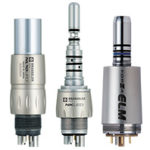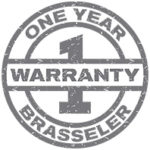
Buying a new handpiece? Whether you’re a recent dental school graduate or planning to upgrade your current practice, here are 10 things you should consider when buying a new handpiece:

1. Budget
This wouldn’t be a buying guide if we didn’t bring up your budget! The first step when considering any handpiece purchase is determining how much you’re prepared to spend. A single handpiece can range from a $250 non-optic high speed to a $1,500 high-end electric attachment. Implant motors and endodontic handpieces can be even higher, so do your homework in advance to determine your limits. When requesting a quote don’t forget to ask whether financing options are available for a large handpiece purchase. It’s also important to remember that you may be able to take advantage of tax deductions for equipment purchases known as Section179. We are experts in handpiece torque not taxes so please consult with your tax advisor for additional information.
 2. Air or Electric?
2. Air or Electric?
Dentistry is trending toward electric handpieces but air handpieces are still used in a majority of dental offices today. There are many advantages to electric handpieces including increased torque and speed control but the upfront investment is higher than a new high speed air set up. In addition to the handpiece attachment, an electric setup includes a motor and a control interface that will increase your cost. Before making a sizable investment in your practice, consider newer technologies available electric handpieces.
 3. What are You Using Now?
3. What are You Using Now?
What you’re using now should be a factor in your new handpiece even if you don’t like your current handpiece. What do you like about your current handpiece? You definitely want to make sure your next purchase offers the same features and benefits that you like about your current handpiece. What don’t you like? If there’s something you don’t like about your current handpiece, you want to make certain your new handpiece resolves that issue.
 4. Current Connections
4. Current Connections
Unless you are starting from scratch or converting from an air-driven handpiece to an electric handpiece, you should consider your current handpiece connection. Most handpiece companies have proprietary connections between the high speed air and coupler as well as between the motor and attachment. Will the new handpiece you are considering work with your existing handpiece? Does the company offer other options that will work with your current setup? Finding a new handpiece that works with your current setup could reduce your cost, increase efficiency and reduce confusion in your practice.
 5. Test Drive
5. Test Drive
You don’t have to rely only on printed literature, websites or videos before making a purchase decision. Get a feel for the handpiece first. Dental conventions are a great place to try multiple handpieces from different companies all in one location. The other option is to evaluate a handpiece in your office where it will ultimately be used. Many companies, including Brasseler, offer programs that allow you to evaluate a handpiece prior to purchase. You should take advantage of these demo programs to test-drive a handpiece to make sure it’s right for you.
 6. Important Features to You
6. Important Features to You
We can list a range of features you should consider, including weight, torque, sound level, water spray, head size and light intensity but ultimately, it depends on what you want. Make a list of features that are important to you and rank them by priority. Chances are you won’t find a handpiece that contains every feature and is still within your budget, but your next purchase should include what is most important to you.
 7. Purpose
7. Purpose
How are you planning to use the handpiece? The intended purpose of the handpiece should factor into your decision making. For example, if you are working with children, then head size and access is important. Doing third molar extractions? Then you should consider a 45-degree-angle handpiece. Are you mainly doing crown and bridge procedures? If so, Torque and durability should be key features in your next handpiece.
 8. Ask a Friend
8. Ask a Friend
An unbiased opinion can provide more insight than a catalog. Talk to a peer or coworker that you trust and find out what they’re using and what they like. Every person will have a different experience, but they may be able to provide you with insight for your next handpiece.
 9. Warranty
9. Warranty
Warranties are an important insurance policy against unexpected repair costs. When looking at a new handpiece, consider the length of the warranty included. The most common warranty period is 1 year for a handpiece, but there are longer warranties available. Ask about the fine print and what is covered under the warranty. Does it include parts and labor? Is free shipping included?
 10. Service After the Sale
10. Service After the Sale
Once you assume ownership of a handpiece, you may still need additional support in the future. Is customer support available? What is the typical turnaround time on repairs? Is someone able to visit your office if you need additional assistance?
Ready to view all your options? Hop on over to our handpieces and small equipment category where you can view our entire line of clinical electric, high-speed air, low-speed air, ultrasonic, hygiene, endodontic, laboratory and surgical products. If you have any additional questions, or need some additional guidance, our support team would be more than happy to assist! Simply give us a call at 800-841-4522 or shoot us an email to CustomerService@BrasselerUSA.
